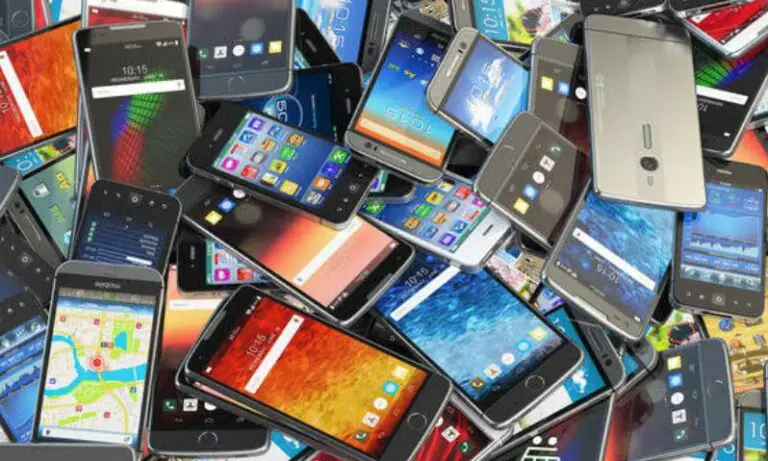Photo editing apps are software applications designed for enhancing and modifying digital photographs. These apps offer a wide range of tools and features to manipulate and improve the quality of images. Users can adjust elements such as brightness, contrast, color saturation, and sharpness to enhance the overall appearance of their photos.
Furthermore, photo editing apps often provide advanced features like filters, special effects, and retouching tools to add creative elements or correct imperfections in images. Users can crop, resize, and rotate photos, remove blemishes or unwanted objects, and apply various artistic effects to achieve desired aesthetics.
Photo editing apps are widely used by photographers, graphic designers, and individuals seeking to enhance their social media posts or personal photo collections. They are available on various platforms, including smartphones, tablets, and desktop computers, making photo editing accessible to a broad audience. These apps have become essential tools for improving and customizing images, making them a fundamental part of modern digital photography and visual content creation.
Development History of Photo Editing Apps
The development history of photo editing apps is a fascinating journey that has evolved alongside advancements in technology and the growing popularity of smartphone photography. Here is a timeline of key milestones and developments in the history of photo editing apps:
1. Early Desktop Photo Editing (1980s-1990s)
- In the early days of digital photography, photo editing was primarily done on desktop computers using software like Adobe Photoshop, which was first released in 1988.
- These early desktop applications were complex and required technical expertise.
2. Rise of Consumer-Friendly Editing (2000s)
- In the 2000s, software like Adobe Photoshop Elements and Corel PaintShop Pro became popular among consumers, offering simplified versions of professional editing tools.
- These applications made it easier for non-professionals to edit and enhance their photos.
3. Instagram (2010)
- Instagram, launched in 2010, played a significant role in popularizing photo editing on smartphones.
- It introduced a range of filters and basic editing tools that allowed users to enhance their photos before sharing them on the platform.
4. Early Mobile Editing Apps (2010s)
- The early 2010s saw the emergence of mobile photo editing apps like Snapseed (acquired by Google in 2012), which offered advanced editing capabilities on smartphones.
- VSCO, released in 2012, gained popularity for its filters and editing tools.
- These apps focused on making photo editing accessible to a wider audience.
5. Adobe Creative Cloud (2013)
- Adobe launched mobile versions of its popular editing tools as part of the Creative Cloud suite.
- Adobe Lightroom Mobile and Adobe Photoshop Express allowed users to edit photos seamlessly across desktop and mobile devices.
6. AI-Powered Editing (Late 2010s)
- In the late 2010s, AI-driven photo editing apps like Prisma gained popularity for their ability to transform photos into artwork styles inspired by famous painters.
- Apps like Google Photos also began using AI to automatically enhance and edit photos.
7. The Emergence of Influencer-Focused Apps (2010s-Present)
- Apps like Facetune and BeautyPlus became popular among social media influencers for their ability to retouch and enhance selfies.
- These apps catered to specific niches within the photo editing market.
8. Augmented Reality (AR) Filters (2010s-Present)
- Apps like Snapchat and Facebook/Instagram introduced AR filters and effects, allowing users to add playful and interactive elements to their photos and videos.
9. Subscription Models (2010s-Present)
- Many photo editing apps transitioned to subscription-based models, offering additional features and content for a monthly fee.
- Adobe’s Creative Cloud and various mobile app subscriptions are examples of this trend.
10. Continued Innovation (2020s)
- In the 2020s, photo editing apps continue to evolve with new features, AI enhancements, and improved user interfaces.
- Users now have access to a wide range of editing tools, filters, and effects to customize their photos.
The development of photo editing apps has closely mirrored the evolution of technology and the changing preferences of users. These apps have democratized photo editing, making it accessible to anyone with a smartphone, and continue to push the boundaries of what’s possible in digital image manipulation.
Examples of Photo Editing Apps
There are many photo editing apps available for both mobile devices and desktop computers, each with its own set of features and capabilities. Here are some popular examples of photo editing apps:
1. Adobe Photoshop Express
- Definition: Adobe Photoshop Express is a simplified version of the industry-standard Adobe Photoshop software, designed for quick and easy photo editing on mobile devices.
2. Adobe Lightroom
- Definition: Adobe Lightroom is a powerful photo editing and organization tool that offers advanced editing features and the ability to sync edits across multiple devices.
3. Snapseed
- Definition: Snapseed is a user-friendly photo editing app developed by Google. It provides a wide range of editing tools, filters, and presets for enhancing photos.
- Website: https://snapseed.online/
4. VSCO (Visual Supply Company)
- Definition: VSCO is a photo editing and sharing app known for its stylish filters and creative editing options. It also functions as a social platform for photographers.
- Website: https://vsco.co/
5. PicsArt
- Definition: PicsArt is a versatile photo editing app that offers a wide array of editing tools, filters, and creative options. It also includes a social network for sharing and discovering art.
- Website: https://picsart.com/
6. Canva
- Definition: Canva is a design platform that includes photo editing features. It’s popular for creating graphics, posters, and social media content, but it also allows basic photo enhancements.
- Website: https://www.canva.com/
7. Pixlr
- Definition: Pixlr is an online photo editor with both web and mobile versions. It offers a range of editing tools, filters, and effects for enhancing images.
- Website: https://www.pixlr.com/
8. Fotor
- Definition: Fotor is a user-friendly photo editing app and online platform that provides various editing tools and templates for creating collages and designs.
- Website: https://www.fotor.com/
9. Prisma
- Definition: Prisma is a unique photo editing app that transforms photos into artwork using various artistic filters and styles inspired by famous artists.
- Website: https://prisma-ai.com/
10. Afterlight
- Definition: Afterlight is a mobile photo editing app that offers a wide range of filters, textures, and editing tools for enhancing photos and creating unique effects.
- Website: https://afterlight.co/
Uses of Photo Editing Apps
Photo editing apps have a wide range of uses and are valuable tools for enhancing and manipulating images. Here are some common uses of photo editing apps:
- Enhancing Photos: Photo editing apps allow users to improve the overall quality of their photos by adjusting brightness, contrast, saturation, and sharpness. This is often used to make photos look more vibrant and clear.
- Color Correction: These apps can help correct color issues in photos, such as adjusting white balance to remove unwanted color casts or making colors more accurate and pleasing.
- Cropping and Resizing: Users can crop photos to remove unwanted elements or resize them for different purposes, such as social media posts or printing.
- Filters and Effects: Photo editing apps offer a variety of filters and effects that can change the mood and style of a photo. This includes vintage filters, black and white conversions, and artistic effects.
- Retouching: Photo editing apps provide tools for retouching portraits by removing blemishes, wrinkles, and other imperfections from faces or bodies. This is commonly used in portrait photography.
- Adding Text and Graphics: Users can add text, stickers, or graphics to photos for various purposes, such as creating memes, promotional material, or adding captions.
- Collage Making: Some photo editing apps enable users to create collages by combining multiple photos into a single image, often with customizable layouts and borders.
- Background Removal: Advanced photo editing apps allow users to remove or replace backgrounds in photos, which can be useful for creating product images or adding creative elements to pictures.
- HDR Editing: High Dynamic Range (HDR) editing apps merge multiple exposures of the same scene to create a single image with enhanced details in both shadows and highlights.
- Color Grading: Professionals often use photo editing apps for color grading, which involves adjusting the colors and tones in a photo to achieve a particular look or style.
- Panorama Stitching: Some apps can stitch together multiple photos to create panoramic images, allowing users to capture wider and more expansive scenes.
- Watermarking: Photo editing apps can be used to add watermarks to images to protect intellectual property or brand your photos.
- Geotagging: Adding geolocation data to photos is possible in some apps, making it easy to organize and catalog your images based on where they were taken.
- Batch Processing: Many photo editing apps offer batch processing capabilities, which allow users to apply the same edits to multiple photos simultaneously, saving time and effort.
- Photo Restoration: In addition to editing, some apps have tools for restoring old or damaged photos by removing scratches, stains, and tears.
- Artistic Creations: Photo editing apps enable users to get creative by transforming photos into digital art, such as paintings, sketches, or comic-style illustrations.
- Social Media Enhancement: Users often use these apps to prepare and enhance photos for sharing on social media platforms like Instagram, Facebook, or Twitter.
Overall, photo editing apps are versatile tools that cater to various needs, from simple enhancements to complex creative projects, making them a valuable resource for both amateur and professional photographers.
Facts, Features and Functions of Photo Editing Apps
Photo editing apps have become incredibly popular in recent years, thanks to the proliferation of smartphones with powerful cameras and the desire for users to enhance and share their photos on social media. Here are some facts, features, and functions commonly associated with photo editing apps:
Facts:
- Popularity: Photo editing apps are widely used by individuals of all ages, from amateurs to professional photographers, for various purposes such as social media posts, digital art creation, and image enhancement.
- Diverse User Base: These apps cater to a broad user base, including people who want quick and easy adjustments as well as those seeking advanced editing capabilities.
- Operating Systems: Photo editing apps are available on various operating systems, including iOS, Android, and Windows, making them accessible to users across different devices.
- Cost: Many photo editing apps offer both free and premium (paid) versions, with the latter typically providing more advanced features and tools.
- Third-Party Integrations: Some apps offer integration with social media platforms like Instagram, allowing users to edit and post photos seamlessly.
Features:
- Basic Adjustments: Most photo editing apps offer features like cropping, rotation, brightness, contrast, and saturation adjustments to enhance the overall look of photos.
- Filters and Presets: Filters and presets allow users to apply pre-designed effects to their photos, giving them a unique and stylized appearance.
- Retouching Tools: These tools help remove imperfections like blemishes and wrinkles, as well as whiten teeth and adjust skin tones for portrait photography.
- Effects and Text Overlays: Users can add various effects, stickers, text, and overlays to their photos to create visually appealing and personalized images.
- Collage and Layout Tools: Many apps include collage and layout options for combining multiple photos into a single image with different arrangements.
- Selective Editing: Advanced apps offer selective editing tools that allow users to make adjustments to specific areas or objects within a photo.
- Advanced Filters: Some apps provide access to more advanced filters, such as gradient maps, color curves, and tone mapping for fine-tuning image colors and tones.
- Brush and Drawing Tools: These tools enable users to draw or paint on their photos, adding artistic and creative elements.
- HDR and RAW Editing: Professional-level apps support editing of high dynamic range (HDR) and RAW photos, offering greater control over exposure and color.
- Batch Editing: Users can apply the same edits to multiple photos simultaneously, streamlining the editing process for large photo collections.
Functions:
- Enhancement: Photo editing apps allow users to enhance the overall quality of their photos by adjusting exposure, color balance, and sharpness.
- Creative Expression: Users can express their creativity by applying artistic filters, overlays, and effects to transform photos into unique works of art.
- Correction: These apps are valuable for correcting common issues like red-eye, lens distortion, and noise reduction.
- Social Sharing: Many photo editing apps offer direct sharing to social media platforms, enabling users to post their edited photos quickly.
- Organization: Some apps include features for organizing and cataloging photos, making it easier to manage large collections.
- Collaboration: In some cases, apps allow users to collaborate on editing projects, where multiple people can work on the same photo simultaneously.
- Export and Printing: Users can export edited photos in various formats and sizes, suitable for digital sharing or printing.
- Backup and Cloud Sync: Some apps offer cloud storage and synchronization, ensuring that edited photos are backed up and accessible across devices.
Photo editing apps have evolved to offer a wide range of features and functions, making it possible for users to enhance and transform their photos according to their preferences and needs.
Conclusion
Photo editing apps have revolutionized the way we enhance and share our images. These versatile tools offer a wide range of creative possibilities, from simple filters and adjustments to complex retouching and manipulation. They empower both amateurs and professionals to express their artistic vision and improve the visual quality of their photos. With the convenience of mobile editing apps and the advanced features of desktop software, individuals can easily transform ordinary snapshots into stunning works of art. As technology continues to evolve, the future of photo editing apps holds exciting potential for even more innovative and user-friendly editing experiences.







Leave a Reply